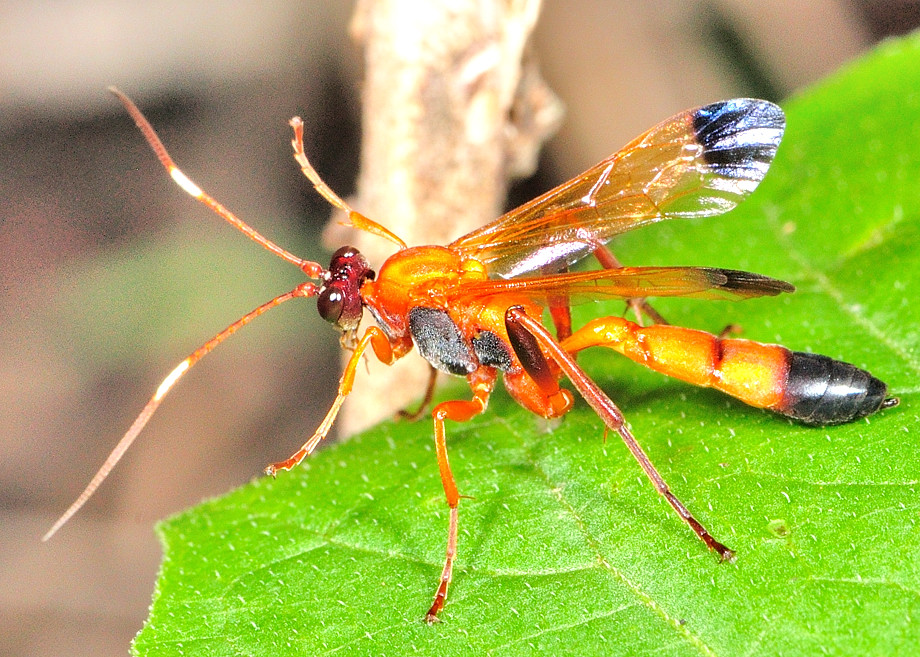
Blacktipped Orange Ichneumon Wasp Ctenochares bicolorus
The black-orange-black color pattern has been well studied in the orders Lepidoptera (butterflies, moths) and Coleoptera (beetles), but a new study is the first to fully examine Hymenoptera (wasps, bees, ants, and sawflies) to document the "BOB" color pattern within that taxonomic order, finding it present in 23 families.

wasp, black, skinny, orange legs Sceliphron caementarium
The black and orange wasps feed on nectar from colorful flowers. Great golden digger wasps measure 0.6" to 0.9" (15 - 23 mm) long. Texas wasp identification: The great golden digger wasp is easy to recognize due to its black and orange abdomen, orange legs, and large compound eyes. Cuckoo Wasps (Chrysis spp.)

New photo 2017 Wasps Black and Orange 5 (c)(t), a moment of their life by OlaoOlavia par Okaio
The noble scoliid wasp has black, orange-yellow and red colors and is common in Florida. The noble scoliid wasp is a stout-bodied wasp with vibrant red, white, and yellow-orange colors on a black body. These beautiful wasps are common in Florida and measure 0.39" to 0.59" (10 - 15 mm) long. The identifying features are the small red spot.

Wild Utah photos, Black and Orange Wasp, FamilyTachinidae, Subfamily Tachininae, Tribe
The green Wasps button leads to addition pictures and information covering a larger variety of species in each of the types presented for individuals interested in more wasp identification help. Fortunately, a very small percentage of Virginia wasps are considered dangerous stinging wasps. In fact, most are considered beneficial insects because.

_MG_0060 Old Black and Orange Wasp Taken with my 20D a cou… Flickr Photo Sharing!
1. Great Black Digger Wasp The Great Black Digger Wasp (Sphex pensylvanicus) is one of the largest black wasps in the country. Males and females of the species constantly grow longer than 1 inch. Males are known for being smaller than females. They typically grow to a size between 0.7 and 1.1 inches.
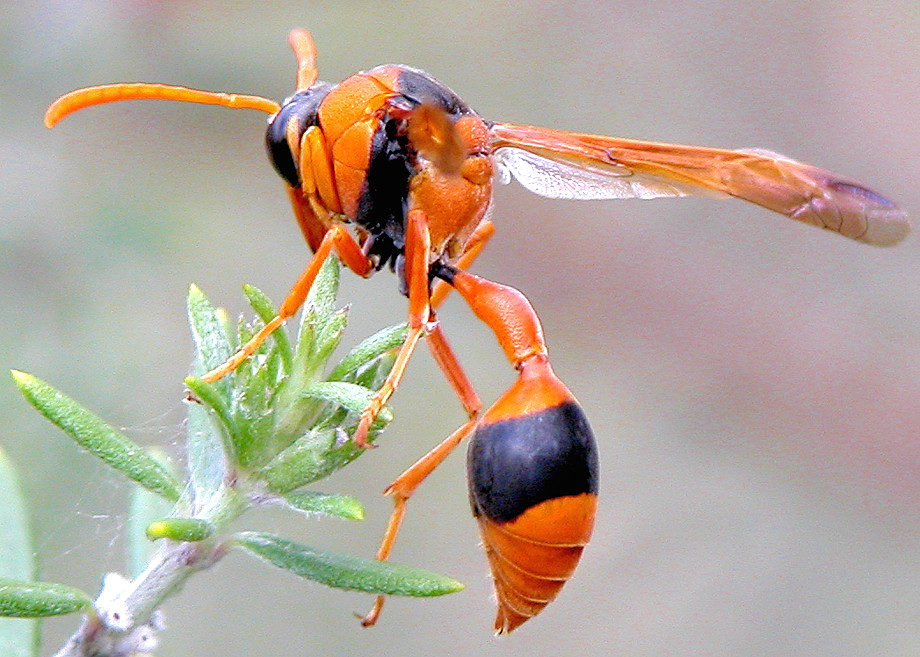
Orange Potter Wasp Eumenes latreilli
Wasps. The family Sphecidae, thread-waisted wasps technically belongs to a larger grouping call apoid wasps, the progenitors of the bee family. North America hosts about 125 species divided into 11 genera. The thin body piece that connects the thorax and the abdomen explains the common name. Most of the species can be found around residential.

Orange Spider Wasp Cryptocheilus bicolor (former Heterodontonyx bicolor)
These are beautiful wasps with orange and black color and interesting behavior. 21. Four-toothed Mason Wasp. Monobia quadridens . The four toothed mason wasp (Monobia quadridens) is a solitary potter wasp that rows to 0.71 inches (18mm) in wingspan, feeding on pollen and small caterpillars. They have black abdomens with a wide ivory band.

Large black wasp with orange on abdomen Anoplius
Scientific Name Sphex pensylvanicus Read our Complete Guide to Classification of Animals. Black Wasp Conservation Status Least Concern Black Wasp Locations North-America Black Wasp Facts Prey Grasshoppers, cicadas, locusts, katydids, and other fleshy insects Name Of Young Larva Group Behavior

Wild Utah photos, Black and Orange Wasp, FamilyTachinidae, Subfamily Tachininae, Tribe
Depending on the species, wasp legs can be black, orange, or yellow. In addition, many wasps have bi-colored legs, which is another way to identify a particular species. Wasps vs. Hornets Size comparison of wasp (left) and hornet (right) Hornets are a type of wasp that differ in size and color.

Black and Orange Wasp 8108F I believe that this is a wasp,… Flickr
Wasps play a critical role in the environment. The adults feed on nectar and therefore help in plant pollination. Indeed, some wasps are essential partners for native orchids. Equally important are their roles as predators and parasites. Wasp larvae eat spiders, caterpillars, beetle grubs, and many other insects.

Cool Large Orange And Black Wasp References octopussgardencafe
All have orange-red bodies and jet black wings. They lazily fly at low levels, occasionally landing on people, pets, and objects before flying off again, sometimes without being noticed. Alone and far from the nest, solo Red Paper Wasps are not typically aggressive, but they do sting if threatened.
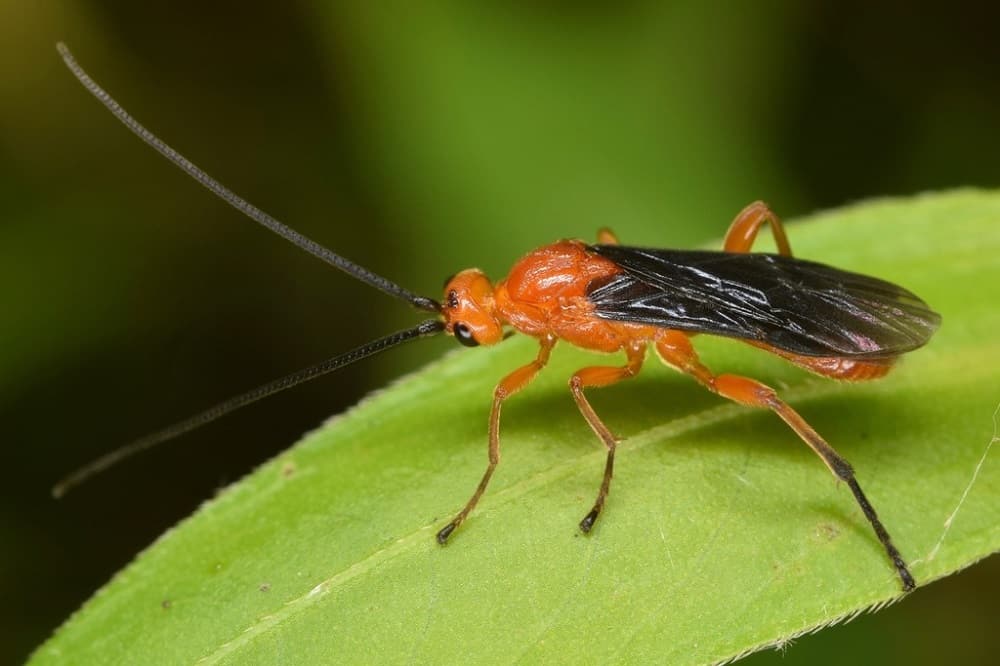
17 Orange and BlackOrange Wasps (With Pictures)
The Great Golden Digger Wasp is a benign, gentle wasp currently being studied by scientists for its behavioral responses. Updated: 02/02/2022; Authored By Staff Writer; Content ©www.InsectIdentification.org Despite its vivid alarm coloration, the Great Golden Digger Wasp is not an aggressive species of wasp.

Orange Spider Wasp Cryptocheilus bicolor (former Heterodontonyx bicolor)
1. Black Wasp (Sphex pensylvanicus) Black Wasp (sphex pensylvanicus) Also known as the great black wasp, this insect can be found in most of North America and northern Mexico and it can get up to one and a half inches in length. It is very large and black in color and the females are larger than the males.
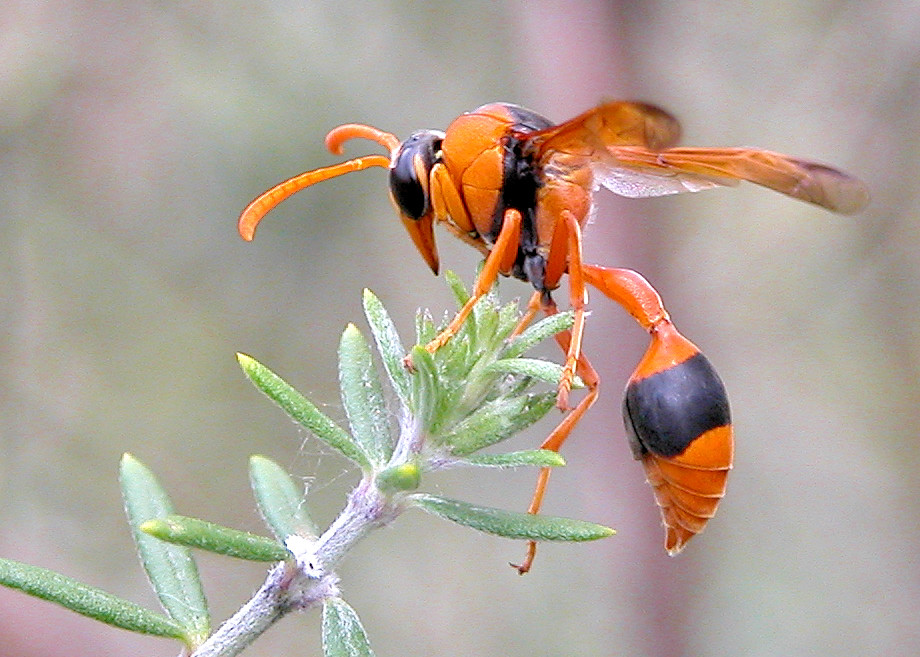
Orange Potter Wasp Eumenes latreilli
Solitary wasps (also called hunting wasps) are a group of related insects primarily consisting of the thread-waisted wasps (Sphecidae) and digger wasps (Crabronidae). They have the following characteristics: Smooth and shiny body; few hairs. Body ranges from slender to stout. Vary in size from less than 1/2 inch long to 1-1/2 inches long.
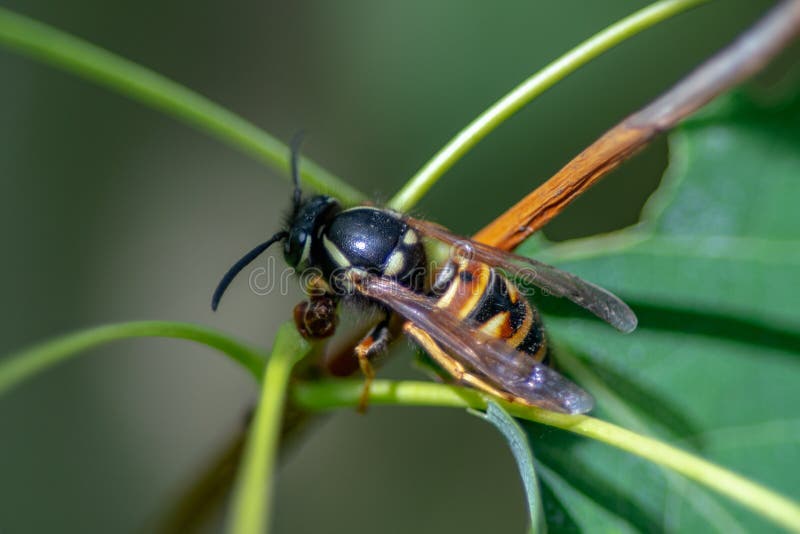
Close Up of a Orange and Black Wasp Sitting among Leaves Stock Image Image of sunshine, green
The Mutillidae are a family of more than 7,000 species of wasps whose wingless females resemble large, hairy ants. Their common name velvet ant refers to their resemblance to an ant, and their dense pile of hair, which most often is bright scarlet or orange, but may also be black, white, silver, or gold.

Small Black & Orange Wasp Dasymutilla
Great black wasps sting their prey to paralyze it, but only females are capable of stinging. This means that 50% of all black wasps which you encounter will not be able to sting because they are male. Black wasps reside in small underground nests that are dug by the female members of the species. Typically, black wasp nests are in loamy or soft.